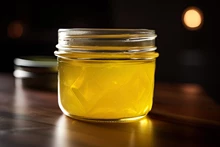
Climate change has a big influence on the future of onions and potatoes. Hazera is working hard to develop the onion of the future. Hazera’s onion seeds portfolio is the result of years of intensive research and development activities, combined with the knowledge and needs gained from our partners in the industry. Hazera is committed to the continuous improvement of their onion portfolio by creating new varieties with better yields, disease resistance, storage and processing qualities. These new genetics bring improvements that the whole industry can rely on well into the future. Hazera`s onion seeds range includes yellow, red, pink and white varieties across the crop-type segments of a short day, intermediate day, long day and extreme long day, as well as overwintering, set and bunching onions.
The varieties are developed for different geographic regions, seasons, and climatic conditions, with consideration always given to changing market demands and consumer preferences. Alongside high yield and quality, our breeders focus on characteristics such as earliness, storage performance, firmness, dormancy, uniformity, bolting tolerance and disease resistance. We use the latest technology to improve these essential features and create stronger performing varieties. A very good example of this enhanced breeding is the introduction of the first Downy mildew resistant onion variety a few years ago.

Hazera has successfully developed a wide range of onion seeds with unique flavors and continues to supply the industry with improved varieties. From delicious sweet and mild flavored short day hybrid varieties, well adapted for production in tropical regions to those specially designed for long storage and robust yields even under stress conditions. With this high quality portfolio we are able to offer growers attractive, high performance varieties that can deliver success in all production processes as well as meeting consumer needs.
A short day onion variety requires a minimal 10 hours of day length (light) before the bulb formation begins. More than 13 hours of day length will limit the growth of the canopy, which is needed for creating a good size onion with optimal storing qualities.
Short day onion varieties are mainly grown in the latitudes ranging from 0 to around 35 degrees. Hazera has located their breeding activities in those same latitudes.
In many areas short day onions are considered the first fresh onions on the market and they compete with the long day onions that have been stored from the previous season.

Depending on the needs in the market, short-day onion varieties come in several colours, like pink, red, white and yellow, with different quality aspect like single centres. In the short day onion production areas, many different shapes and grade sizes are also used, ranging from 45 to over 100mm.
In this crop-type varieties come in different maturity slots and different levels of firmness, skin retentions and dormancy.
This crop-type requires approximately 12 to 14 hours of day length before bulb formation begins. Intermediate day onion varieties are grown in the latitudes of 35 to 42 degrees. Some of these onion varieties are produced to be stored, shipped or transported over long distances and timescales, so storability, firmness and skin retention is a key aspect in our breeding activities.
Long day onion varieties will start bulb formation when they receive around 14 hours of day length. Long day onions are generally suitable for longer-term storage of 5 months or more. Long day onion varieties are grown for several purposes, including export and long storability. These onions are characterized by a high level of dormancy, good skin retention and firmness. Also within this crop-type varieties come in several sizes, shapes depending on market requirements and can also exhibit differences in skin retention and the level of single centres.
A day length of 16 hours or more is required to begin bulb formation in extreme long day onion varieties, which are also known as Rijnsburger types. These onions are firm, have strong skin retention and have a high level of dormancy. The extreme long-day onions are grown in areas where the required size ranges from 40 to 85mm, therefore onion production involves seed density at higher levels. These onions can be used for very long term storage and are also capable of being transported for exports to markets all over the world. Optimal growing condition for this crop-type requires a milder temperature, ranging from 15C to 25C.
Set onions are utilized within production programmes for several key reasons. In some areas where they face difficult early season conditions and temperatures, they use sets to achieve a better emergence and secure higher early yields. In other areas, early set onions are considered to be “new” fresh onions. Growers are able to plant set onions earlier creating a shorter growing season and helping them achieve early harvest, which can often secure access to
more attractive markets.
Set onions are produced and utilized over two seasons. In the first year, small set bulbs are produced using a high seed density regime. The following season these small set bulbs are then planted at standard production densities and eventually harvested as a finished crop.
In some areas, the first year set onions have to be stored for a long time with some varieties requiring special conditioning to reduce bolting in the second year of cultivation.
Overwintering onions are being utilized to help start the harvesting of onions as early as possible and supply the market with “new” fresh onions. This crop-type is drilled in early autumn, withstanding cold winters and will be harvested as a bulb or in some cases as a bunch in late spring into early summer. Some of the varieties can withstand frost conditions of minus 20C. Varieties of this crop-type require day lengths of over 10 hours to start bulb formation.
The true bunching onion varieties generally come from a different species than the Allium Cepa, known as Allium Fistulosum and are used for bunched onions or spring onions. Varieties from this crop-type are bulbless and have long edible hollow stems and leaves. Therefore the day length to start bulb formation is not an issue and these varieties can be grown anywhere in the world. This crop-type has a milder flavour and is used in many dishes raw or cooked.
Currently, around 50 per cent of bulb onions consumed in the UK is imported. A
surprisingly high figure considering the suitability of our climate, soils and
varieties and the commodity nature of the crop – with low margins making
operating at scale essential.
Match funding through the Fruit and Veg Aid Scheme has supported major
development by producer organizations in onion storage systems. Reliance on
imports has been reduced thanks to innovations in high-quality onion storage
technology extending the marketing period of homegrown onions to 49 weeks while reducing wastage and increasing marketed volumes. Since 1990 the UK
industry has seen a 30 per cent-plus increase in the five-year average onion yield.
Alongside advances in storage, onion breeding is also playing a significant role.
Ten years ago downy mildew resistance in onions was aspirational while more
recently resistance to fusarium has become increasingly desirable, due to higher
disease pressures.
“Progressive forward-thinking onion breeding companies see such absolutes as a
challenge to be met and matched,” says John De Soyza, market development
manager for root and salad crops at Hazera Seeds UK. “We became one of the
first companies to launch a downy mildew resistant onion. The launch of our
mildew resistant ‘Santero’ variety is proving revolution, helping change what is
possible in the European organic onion market.
“More recently, through work in collaboration with Warwick University, we have
identified high resistance to Fusarium within the allium genome. This
fundamental research is set to create greater security against Fusarium attack in
the future.”
Another major challenge remains flexibility in changing seasons and market
conditions.
“An early maturing variety with long storability attributes would offer major
benefits by optimizing flexibility,” explains John De Soyza. “However, until now
early maturing varieties have failed to offer the long term storability attributes
generally associated with some mid and late-season varieties.”
Facing up to the challenge, over several years Hazera has subjected onions in
screening trials to extreme storage tests in order to select for improved
storability.
“Initially these tests pushed ambient stored samples as far as possible into May
and June to see who were the ‘last men standing’,” says John.
“Although the ambient test gave good comparative data, we set out to push the
onions further developing an accelerated deterioration test. This creates high
pressure conditions for rotting and sprouting using elevated temperatures over
a ten week period.”

These more extreme tests put additional pressure on the onions and one variety
stood out – Fasto F1. “In recent testing, this variety achieved an astonishing
100 per cent marketable yield ex store, despite the extreme storage environment, and
the test bulbs remained highly dormant,” says John. “Encouragingly, in 2017
commercial-scale trials showed Fasto F1 to be very high yielding and early
maturing.”
In this year’s NIAB trials, on average Fasto F1 reached 80% fall over 1-4 days
ahead of the first early reference variety.
“Such a variety represents ‘the Holy Grail’ of onion breeding – offering complete
flexibility to the grower through early maturity and long term storage,” says
John. “Widely tested and put through it paces this year in the main UK onion
production areas, Fasto F1 has consistently demonstrated strong early
establishment and vigour – despite some very challenging spring conditions. It
also appears to withstand herbicide applications better.
“Maturity has been very early on all locations comparing well to the earliest UK
standards. Bulb size and uniformity have been excellent leading to high yields
and little waste or undersized bulbs.
“While breeding revolutions are rare, Fasto F1 has so far shown itself to be a
groundbreaking variety. Together with improvements in storage technology, this
timely new introduction is poised to benefit the UK onion industry by helping to
stem the tide of onion imports.”










